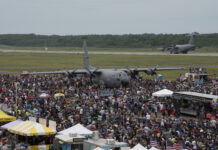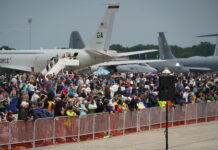In his 2004 book, The Wisdom of Crowds, author James Surowiecki asserts that, when large groups of people are asked to judge questions of fact, their collective answer is almost always more accurate than any individual’s answer. For most people, this is counter-intuitive. They tend to put a much higher value on the wisdom of the individual than the collective wisdom of the group. A classic demonstration of group intelligence is the jelly-beans-in-the-jar experiment, in which the group’s estimate is invariably superior to and more accurate than the vast majority of the individual guesses.
With that in mind, I hope that you’ll find time to review the results of the 2008 ICAS Air Show Spectator Survey as featured in this issue of Air Shows Magazine. For me, three things pop out immediately.
The first relates to the survey responses to the question, “What were the main attractions for you at this air show?” We have asked this same question of more than 25,000 air show spectators during the past 20 years and their collective opinions have varied little from year to year. The military jet teams are always the top draw. The single ship fighter demonstrations are always a strong second. The contemporary military statics are consistently the third most popular “main attraction,” followed by performing warbirds in fourth. Civilian aerobatic performances and warbird statics have been effectively tied for fifth place for the last two decades.
If there is wisdom in crowds and if, as Surowiecki suggests, that wisdom grows stronger as the crowd goes larger, then the responses to this question should be considered a virtual mandate to the air show professionals who select performers. Your customers have spoken clearly and told you what they expect to see at your show. Will you ignore their collective wisdom?
The second item has to do with this question from the survey: “What areas of the air show do you think could benefit most from improvement?” The responses are clear and definitive. “Traffic and parking,” your spectators seem to be pleading. “Please do something about the traffic and parking.” This is not the odd letter to the local newspaper editor or occasional angry phone call. This is the collective wisdom of thousands of air show spectators. They consider traffic and parking to be the most significant problems that our industry faces.
But parking and traffic considerations are too often an afterthought. Air show traffic horror stories are, sadly, quite common. They damage the entire industry’s reputation. They ruin the air show experiences of hundreds of thousands of first-time spectators. And they are largely avoidable. Already this year, several shows have under-planned for this aspect of their events and experienced massive traffic and parking problems.
Our customers have told us, clearly and repeatedly, that they consider this an issue that is most in need of attention and improvement. Will we continue to ignore the clear message that they are communicating to us?
Finally, our 2008 survey results have sent a clear message about air show ticket price. The collective wisdom of our customers? Air shows are not charging high enough admission fees.
This year, for the first time, we asked a direction question of our nearly 2,500 survey respondents: How would you describe the cost of your air show admission ticket? Even after eliminating the answers of those attending free shows, only 13.1 percent of all those surveyed answered “expensive” or “very expensive.” And, when we asked, “What areas of the air show do you think could benefit most from improvement,” less than one in ten identified ticket price needing improvement.
A feature-length film at your local movie theater costs more than ten bucks and an inexpensive ticket at a Major League Baseball game is more than $25. NBA, NHL and NFL tickets are $50 or more. And yet the average adult ticket price at North American air shows in 2008 was $12.03. Virtually every paid admission air show in all of North America is looking for additional revenue. Is it possible that the answer is as simple as raising ticket prices?
I’ve made this point with, literally, dozens of event organizers. Their responses are pretty similar. “It may be possible to increase ticket prices in other markets, but not here. Our audience won’t pay more than ten dollars (or six dollars or twelve dollars or 15 dollars).” But the audience disagrees. Your spectators — the people who are actually making the buy/sell decision — are telling you that current ticket prices are too low.
The information contained in our biennial air show spectator is powerful stuff. Its accuracy and relevance have been proven and re-proven many times during the past two decades. But, ultimately, it is only as useful as our willingness to trust the collective wisdom of the thousands of people who have taken the time to share their opinions with us.








